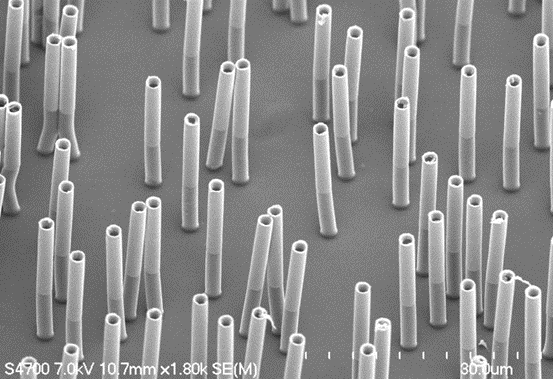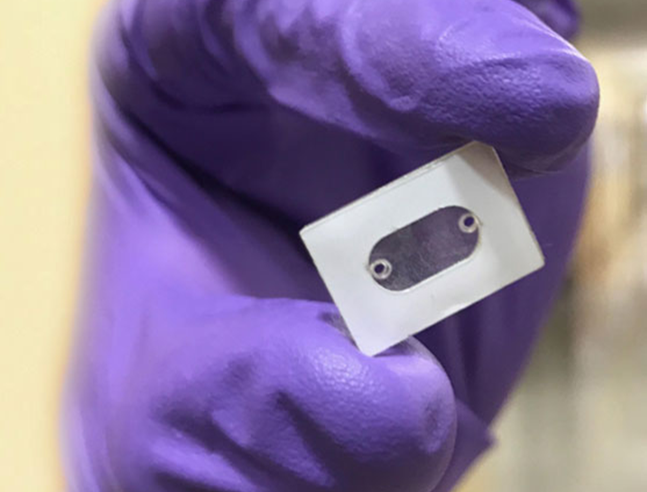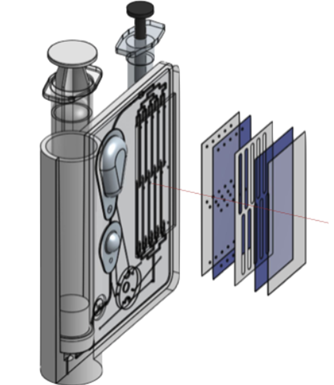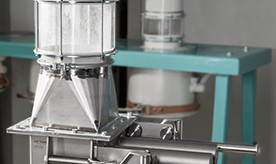
Flexible magnetic micropillars printed on a silicon film, Redbud Posts work like a ceiling fan or anchored stirbars when a magnetic field is applied. Their rotation can stimulate microfluidic agitation to speed up biotech and scientific mixing processes. The posts are a defining technology of Redbud Laboratories, based in Research Triangle Park, North Carolina.

Its MXR microfluidic chip is the world’s fastest, most adaptable cartridge-ready microfluidic mixing component, the company says. Designed to enable controlled fluid mixing at low volume levels, less than about 200 μL, MXR is a modular, fully assembled microfluidic chip that simply clicks into place in a testing cartridge. It can overcome limitations due to poor mixing and is useful in a variety of life science applications ranging from biomarker discovery to point-of-care diagnostics.
Chemists understand that reaction success depends on effective mixing. At typical laboratory volumes, stir bars, shaking and swirling can all provide adequate mixing, but these techniques are impractical or ineffective at the microscale. MXR is designed to quickly mix a sample with reagents in a microfluidic chamber. The result of using MXR chips is often shortening an assay’s time to read results.
When the requirements for sample must be low, employing MXR can enable sufficient readouts. This can offer a huge advantage for systems being developed that are aimed to test vulnerable patient populations.

Last year, Redbud expanded its cartridge-ready STR (sorter) microfluidic chip family with the introduction of STRBeadPak. It combines the company’s proprietary Redbud Post technology with off-the-shelf magnetic beads to enable system developers to instantly port their sample prep workflows onto microfluidic cartridges. This product line extension means Redbud’s STR chip line is now backwards-compatible with a vast catalogue of existing life science workflows.
STRBeadPak is compatible with magnetic beads of virtually any size and surface functionalization, including antibody, oligomer nucleotide, or a generic binding moiety such as neutravidin. Potential workflows include immunoassays, nucleic acid purification, and sorting of extracellular vesicles, microbes, and cells.

“Since we launched STR last year, we’ve gotten questions about what functional chemistries it would support. Today, we have an answer: all of them. STRBeadPak is the first product of its kind. It empowers system developers to continue using the magnetic beads they know and trust, with full confidence that they have a path to a cartridge-based solution down the road,” said Richard Spero, CEO. He cited a recent study where the product captured 94% of targets in 5 minutes, compared to only 9% for an on-cartridge method, and achieved 1,000x faster target capture versus a conventional on-cartridge method. For more info, see www.redbudlabs.com.



